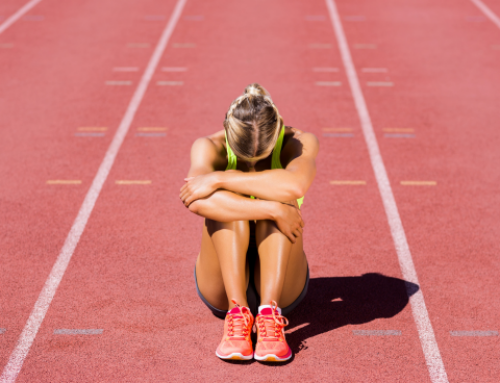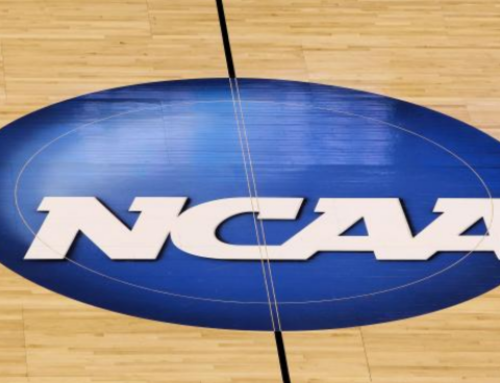Sports Scientist: Who Are They and What Do They Do?
“Sport Science” has traditionally been a catch-all term often used for anybody or anything that has to do with competitive sports and enhancing athletic ability. While this isn’t 100% incorrect, it far from captures the essence of what it truly is or the profession itself.
In years past, Sports Scientists were often classified as those who served in academia, coached a particular sport, or somehow leveraged technology to better serve their athletes. Nowadays, Sports Scientists are a formal position within many collegiate and professional sports teams that play an integral part in the overall success of a large-scale human performance program. Their aim is to use an applied scientific process to assist coaches’ decision-making processes and optimize athlete development in competitive sporting environments. This is typically done through quality data collection, interpretation of said data, and dissemination of information or proposed action steps to the appropriate stakeholders/decision-makers.
Areas of Sports Science
Sports Science covers all areas of human performance. Those areas include exercise physiology, biomechanics, motor control, motor development, sport psychology, and nutrition.
Interestingly, many Sports Scientists are now being cast in dual role positions such as “Assistant Strength & Conditioning Coach/Sports Scientist” to ensure that said individual not only has the knowledge to collect and interpret the data but a wealth of knowledge about human performance and how to action their findings.
Job Functions of a Sports Scientist
Part of what makes Sports Science a particularly fascinating field is the continuous growth and evolution it has alongside sport. The two are quite literally synonymous in that as one grows, so too does the other. We’ve long understood many things about the human body from a generic standpoint, but as modern athletes strive for higher levels of performance, Sports Science is there to both support and guide it.
Below are a few of the current major functions Sports Scientists perform regularly. It should be noted that they perform a wide variety of functions which would be nearly impossible to capture in one article, but these are some of the most major ones.
Sports-Specific Testing
Sports-specific testing has long been a part of human performance training programs, and for good reason. It provides baseline data to inform coaches/athletes of their current fitness status which can then be repeated in the future to track progress and determine the effectiveness of their current training methods. Common assessments include but are not limited to VO2 max testing (biking or running), strength measurements (i.e. isometric mid-thigh pull), vertical jumping, and lactate threshold testing. The sport the athlete(s) participate in will ultimately determine which tests are necessary, but a sports scientist can ensure that these tests are performed accurately so that yielded results can be trusted and used to guide decision-making.
Workload Monitoring
Tracking the amount of “work” an athlete performs daily can be a daunting task. Many coaches have aimed to simplify the process in the past through the use of methods such as Acute to Chronic Workload Ratio (ACWLR) which standardizes all activities into one type of arbitrary unit (AU). This AU is the result of time multiplied by the athlete’s rate of perceived exertion (RPE) which gives one an idea of the workload an athlete has accumulated.
The accuracy and effectiveness of this method have been debated in the past, but many Sports Scientists now integrate several other methods to determine an athlete’s workload. These include things such as global positioning system (GPS) monitoring, force plate assessments, accelerometers or velocity measurements, and heart rate monitoring to name a few. All these methods collect different types of data, but ultimately help coaches understand trends in athlete fatigue and how the training or competition is affecting the athletes’ performance.
Movement Screening and Motor Control
Assessing how an athlete move is a critical piece to the overall puzzle of success. Sports Scientists strive to identify movement deficiencies or areas of weakness that put athletes at greater risk for injury and/or may be limiting their performance capability. These insights lead to a better understanding of the mechanisms behind injury, the predictive measure of injury, and interventions to reduce injury prevalence.
The assessments a Sports Scientist chooses to perform on the athlete will depend on the demands of the sport, however many of these assessments are applicable across a variety of sports. Jumping/landing assessments are extremely common, for example, through the use of dual force plate technology where the athlete’s limb-to-limb symmetry (or lack thereof) can be assessed among several other key factors.
Another common one is a running or sprinting gait assessment of an athlete through time motion analysis. This can help coaches understand an athlete’s locomotive efficiency and potential areas of improvement that can be targeted through appropriate training methods.
Sports Scientists can choose to perform dozens more tests if deemed necessary for their particular athletes, however, it is the interpretation and action item that arise from these assessments that matter most.
Conclusion
In summary, Sports Science covers all areas of human performance including exercise physiology, biomechanics, motor control, motor development, sport psychology, and nutrition.
Sports Scientists therefore aim is to use an applied scientific process to assist coaches’ decision-making processes and optimize athlete development in competitive sporting environments. This is typically achieved through quality data collection, interpretation of said data, and dissemination of information or proposed action steps to the appropriate stakeholders/decision makers.
The future of sports science appears exciting due to its currently exponentially progressive nature, giving working professionals a hopeful vision of it’s limitless future.
RECOMMENDED FOR YOU
MOST POPULAR
Sports Scientist: Who Are They and What Do They Do?
“Sport Science” has traditionally been a catch-all term often used for anybody or anything that has to do with competitive sports and enhancing athletic ability. While this isn’t 100% incorrect, it far from captures the essence of what it truly is or the profession itself.
In years past, Sports Scientists were often classified as those who served in academia, coached a particular sport, or somehow leveraged technology to better serve their athletes. Nowadays, Sports Scientists are a formal position within many collegiate and professional sports teams that play an integral part in the overall success of a large-scale human performance program. Their aim is to use an applied scientific process to assist coaches’ decision-making processes and optimize athlete development in competitive sporting environments. This is typically done through quality data collection, interpretation of said data, and dissemination of information or proposed action steps to the appropriate stakeholders/decision-makers.
Areas of Sports Science
Sports Science covers all areas of human performance. Those areas include exercise physiology, biomechanics, motor control, motor development, sport psychology, and nutrition.
Interestingly, many Sports Scientists are now being cast in dual role positions such as “Assistant Strength & Conditioning Coach/Sports Scientist” to ensure that said individual not only has the knowledge to collect and interpret the data but a wealth of knowledge about human performance and how to action their findings.
Job Functions of a Sports Scientist
Part of what makes Sports Science a particularly fascinating field is the continuous growth and evolution it has alongside sport. The two are quite literally synonymous in that as one grows, so too does the other. We’ve long understood many things about the human body from a generic standpoint, but as modern athletes strive for higher levels of performance, Sports Science is there to both support and guide it.
Below are a few of the current major functions Sports Scientists perform regularly. It should be noted that they perform a wide variety of functions which would be nearly impossible to capture in one article, but these are some of the most major ones.
Sports-Specific Testing
Sports-specific testing has long been a part of human performance training programs, and for good reason. It provides baseline data to inform coaches/athletes of their current fitness status which can then be repeated in the future to track progress and determine the effectiveness of their current training methods. Common assessments include but are not limited to VO2 max testing (biking or running), strength measurements (i.e. isometric mid-thigh pull), vertical jumping, and lactate threshold testing. The sport the athlete(s) participate in will ultimately determine which tests are necessary, but a sports scientist can ensure that these tests are performed accurately so that yielded results can be trusted and used to guide decision-making.
Workload Monitoring
Tracking the amount of “work” an athlete performs daily can be a daunting task. Many coaches have aimed to simplify the process in the past through the use of methods such as Acute to Chronic Workload Ratio (ACWLR) which standardizes all activities into one type of arbitrary unit (AU). This AU is the result of time multiplied by the athlete’s rate of perceived exertion (RPE) which gives one an idea of the workload an athlete has accumulated.
The accuracy and effectiveness of this method have been debated in the past, but many Sports Scientists now integrate several other methods to determine an athlete’s workload. These include things such as global positioning system (GPS) monitoring, force plate assessments, accelerometers or velocity measurements, and heart rate monitoring to name a few. All these methods collect different types of data, but ultimately help coaches understand trends in athlete fatigue and how the training or competition is affecting the athletes’ performance.
Movement Screening and Motor Control
Assessing how an athlete move is a critical piece to the overall puzzle of success. Sports Scientists strive to identify movement deficiencies or areas of weakness that put athletes at greater risk for injury and/or may be limiting their performance capability. These insights lead to a better understanding of the mechanisms behind injury, the predictive measure of injury, and interventions to reduce injury prevalence.
The assessments a Sports Scientist chooses to perform on the athlete will depend on the demands of the sport, however many of these assessments are applicable across a variety of sports. Jumping/landing assessments are extremely common, for example, through the use of dual force plate technology where the athlete’s limb-to-limb symmetry (or lack thereof) can be assessed among several other key factors.
Another common one is a running or sprinting gait assessment of an athlete through time motion analysis. This can help coaches understand an athlete’s locomotive efficiency and potential areas of improvement that can be targeted through appropriate training methods.
Sports Scientists can choose to perform dozens more tests if deemed necessary for their particular athletes, however, it is the interpretation and action item that arise from these assessments that matter most.
Conclusion
In summary, Sports Science covers all areas of human performance including exercise physiology, biomechanics, motor control, motor development, sport psychology, and nutrition.
Sports Scientists therefore aim is to use an applied scientific process to assist coaches’ decision-making processes and optimize athlete development in competitive sporting environments. This is typically achieved through quality data collection, interpretation of said data, and dissemination of information or proposed action steps to the appropriate stakeholders/decision makers.
The future of sports science appears exciting due to its currently exponentially progressive nature, giving working professionals a hopeful vision of it’s limitless future.











